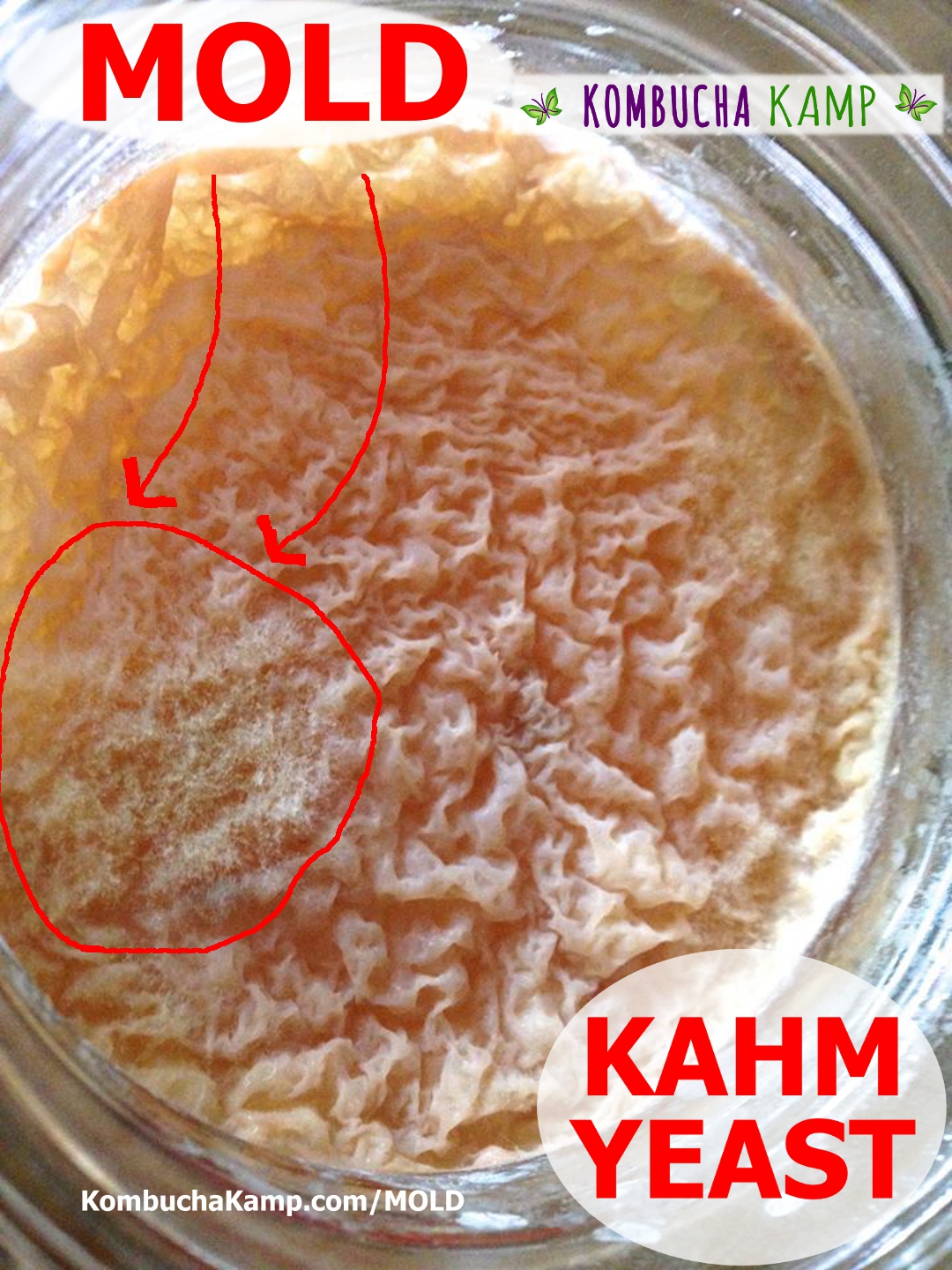
সদ বদধ একট সধরণ নরহ ছচ য কখনও কখনও উততজত খবর বড যয grows এট একট সলটড চমচ ব নযমত চমচ দয সরয ফল ভল এব এটক. Learn more about kahm yeast and what to do about it.

Kahm yeast is not harmful although it may be unattractive or even smell a little odd.
Kahm yeast vs mold. How to Tell the Difference Between Kahm Yeast and Mold. Kahm yeast is a thin white to cream-colored layer sometimes with air bubbles of trapped carbon dioxide. It often has a stringy bloom-like look to it.
Mold on the other hand is raised and fuzzy and can be white black pink green or blue. Mold most often starts as spots on the surface and then spreads into a thick layer. Mold or Kahms Yeast on Kombucha Brews.
Mold is rare with Kombucha but if it does appear all cultures and liquid should be disposed of completely. These photo galleries provide examples of actual mold on Kombucha so review closely before taking action. If you are unsure you may email us the photo via the contact page.
Mold is a multi-celled organism. Kahm yeast looks like a thin stringy white creamy colored growth or it has a translucent coloring. On the other hand a mold formation on your fermented food looks fuzzy and is colored as green blue black or white.
Mold grows and spreads out into a clumped layer. Strands of yeast can embed in the new Kombucha culture as it forms a layer on the brew. Yeast strands are brown and sometimes clumpy but when underneath the surface can never be mold.
This Kombucha brew may be cold causing collections of yeast under the new SCOBY growth but there is no mold. The film present on the surface of vegetable ferments is often not mold but yeast specifically kahm yeast. If the film is white and fairly flat it is most likely yeast which is a common occurrence.
Learn more about kahm yeast and what to do about it. One of the most common visible contaminations is a white cloudy substance called Kahm Yeast. While Kahm yeast isnt harmful it can indicate that there is a problem with your ferment.
Kahm yeast is actually safe to eat as long as there are no molds present and the ferment tests at a pH of 4 or lower. Mould is quite different from kahm yeast when you look closely enough. It is important to be able to tell the difference between the two because mould in a ferment is not good and you are better off throwing away the fermenting vegetables and starting again.
About Press Copyright Contact us Creators Advertise Developers Terms Privacy Policy Safety How YouTube works Test new features Press Copyright Contact us Creators. When asked if kahm yeast on the top can be scooped off and thrown away the answer was the same. Kahm yeast is a white film sometimes grey.
The picture shown below viewed from the top of the jar has kahm yeast on top. Mold needs air to live and there is not any air under the liquid line of your kombucha and so any mold that does appear will be right there on the top surface so you should notice it quickly. Kahm yeast looks very similar to mold and has caused a lot of people to throw out a good batch of kombucha.
Creamy White In Color - The color of kahm yeast is a creamy white tone. It shouldnt be any other colors. Common mold could appear in yellow green and black.
Have a look at the top of your brew or alternatively through the side of you glass jar to inspect the color of growth. Get reset password link. Mold or kahm yeast.
Mold or kahm yeast. Often this white film is mistaken for mold and the entire ferment is discarded. However the white film is usually a type of yeast known as kahm yeast.
Kahm yeast is not harmful although it may be unattractive or even smell a little odd. It should be removed from the ferment so it does not impart a bad odor but a little bit left in the jar is not harmful to the vegetables or to you. সদ বদধ একট সধরণ নরহ ছচ য কখনও কখনও উততজত খবর বড যয grows এট একট সলটড চমচ ব নযমত চমচ দয সরয ফল ভল এব এটক.